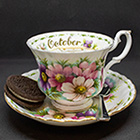Built my first web page back in the mid/late 90s, using notepad, and have mostly used the CC HTML Editor for the rest of them, although I've also made quickie sites with VSD. Recognizing the need to 'get responsive', I purchased Foundation Framer, Bootstrap Builder and Responsive Site Designer, but have not yet installed or tried out any of them. Yeah, I'm intimidated by them, and this is after watching some of the tutorial videos...
I've read some the threads about the VSD 2 Beta, which I have, and am wondering about the desktop-down/coffeegrinder issue that I've seen referenced in a couple of those threads.
It seems clear enough that users of RSD 1.5 are able to create a blank project in desktop-down, mode and open it in RSD 2, retaining that setting. As a raw newbie to these programs, I can't visualize building a site from the mobile-first perspective, and it seems much more intuitive to me to design for the desktop and then tweak sizes & positioning for smaller devices. So it seems that the best bet for me would be to use the trick with RSD 1.5 to start with the desktop setting.
However, Scott recommended uninstalling RSD 1.5 prior to installing the 2.0 Beta. So it would seem like I should install 1.5, create and save the blank project, and then uninstall it prior to installing 2.0?
I've also considered installing 1.5 on another of my computers to create the blank project, and then move it to the one where I'll be using 2.0. This (theoretically...) would avoid any potential conflicts that could develop by having both versions installed on the same machine contemporaneously.
But would it cause other problems? I read one post that mentioned that RSD uses information from the C:\Users\user-account-name\AppData\Roaming folder to pick up settings that refer to Framer & Bootstrap. And maybe RSD as well?
In other words, is it a bad idea to have 1.5 and 2.0 running on different machines, if the intent is to be able to load projects created Desktop Down on 1.5 and then try to open the project on a different computer running 2.0?
Probably making this more difficult that it should be, aren't I?







